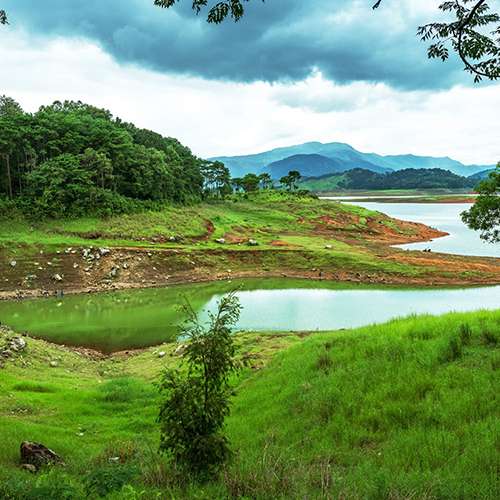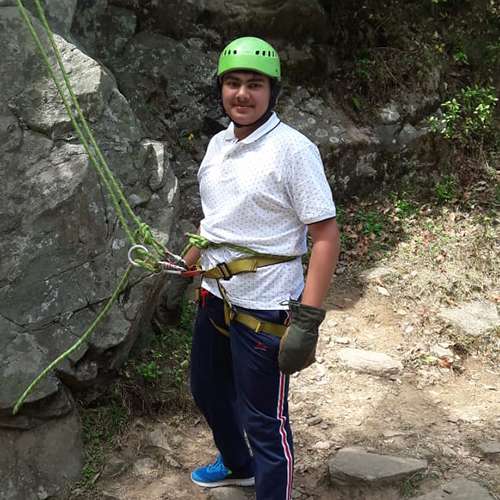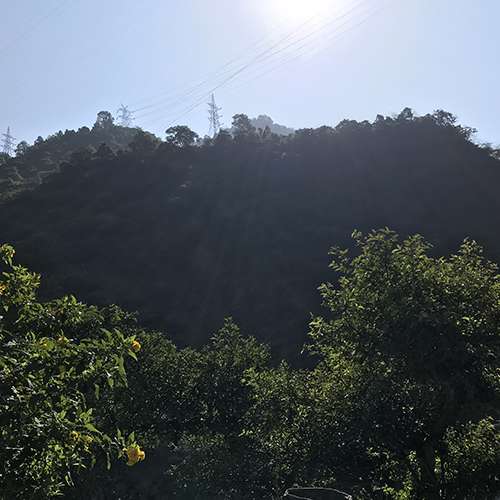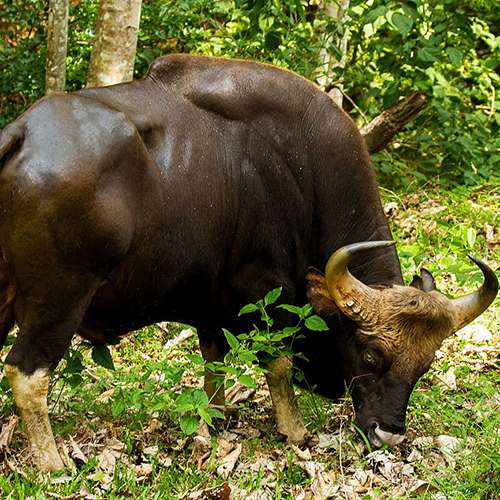The Great Himalayan National Park (GHNP) at the junction of world's two major faunal regions. Initially constituted in 1984, GHNP was formally declared a National Park in 1999, is situated at an altitude of between 1500 to 6000m. As a result of its 4,100 m elevation range the Park has a diversity of zones with their representative flora and fauna, such as alpine, glacial, temperate, and sub tropical forests.
The temperate forest flora-fauna of GHNP represents the western most extension of the Sino-Japanese Region. The high altitude ecosystem of the Northwest Himalaya has common plant elements with the adjacent Western and Central Asiatic region. The Upper Mountain glacial and snow melt water source origins of the westerly flowing Jiwa Nal, Sainj and Tirthan Rivers and the north-westerly flowing Parvati River which are all headwater tributaries to the River Beas and subsequently, the Indus River.
The Great Himalayan National Park is a habitat to numerous flora and more than 375 fauna species that comprises approximately 31 mammals, 181 birds, 3 reptiles, 9 amphibians, 11 annelids, 17 mollusks and 127 insects. Added to the UNESCO list of World Heritage Sites in June 2014, The Site Committee granted the status to the park under the criteria of "exceptional natural beauty and conservation of biological diversity".
STATE : HIMANCHAL PRADESH
LOCATION : The Great Himalayan National Park is located in Kullu region in the state of Himachal Pradesh.
LANGUAGE : Himanchali, Hindi and English.
WHEN TO VISIT : The best time to visit Great Himalayan National Park is April to June in summer and September to October in autumn. This time the weather is best to visit the place.
CLOTHING : Cotton and light woolen outfits which match with surroundings like dark green, muddy-brown and rocky-grey are the ideal clothing color. Avoid shiny or reflective clothes during park safari which may diverts or attracts wild animals & birds’ attention which may become cause them leaving the place.

Nature

Adventure

Wildlife

National Park
Great Himalayan National Park is connected with motorable road with different places and cities in India. Banjar and Sainj are the two main entries to the Park.
Nearest rail-head Jogindernagar is 117-km from Great Himalayan National Park. A bus or taxi from the railway station would get you easily to the national park.
The nearest airport Bhuntar also known as Kullu Manali airport is 46 km away from Great Himalayan National Park. It is connected by flights with different cities in India.
Best Season / Best Time to Visit Great Himalayan National Park
January
February
March
April
May
June
July
August
September
October
November
December
CLIMATE
OPENING OF PARK: Great Himalayan National Park is open throughout the year. Winter months (December, January and February) are very cold and there is snowfall in GHNP. Only the lower altitude treks remain open, but it will be very cold.
PERMIT : Permit required for Entry to this protected region. It can be obtained, either from the Director's Headquarter at Shamshi or from the range officers stationed at Sairopa, Banjar and Sainj.
ENTRY FEE: Entry fee for Indian nationals is 50 rupees per person per day. For foreign national, the entry fee is 200 rupees per person per day.
 :Great Himalayan National Park is remained unexplored because it is completely free of any human activities. The park offers unique opportunities for wildlife lover. The only way to enjoy GHNP is to trek in the park. One can trek the park with recognized and experienced guides, porters and cook.
:Great Himalayan National Park is remained unexplored because it is completely free of any human activities. The park offers unique opportunities for wildlife lover. The only way to enjoy GHNP is to trek in the park. One can trek the park with recognized and experienced guides, porters and cook.
Trekking in the park is no easy task and requires a person to be in shape. On the way to your track you can explore the biodiversity of fauna and flora. It is better to do some prior preparation in the form of things to carry, which include basic trekking equipment such as tents, sleeping bags etc.
At the point of starting the tracking, it is not allowed for individuals to venture alone or even in groups without professional guides. It takes minimum two days trekking to enter the Park and pent Nights under tents.